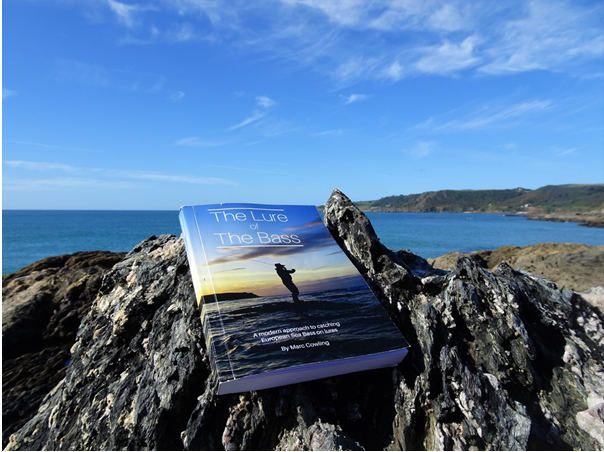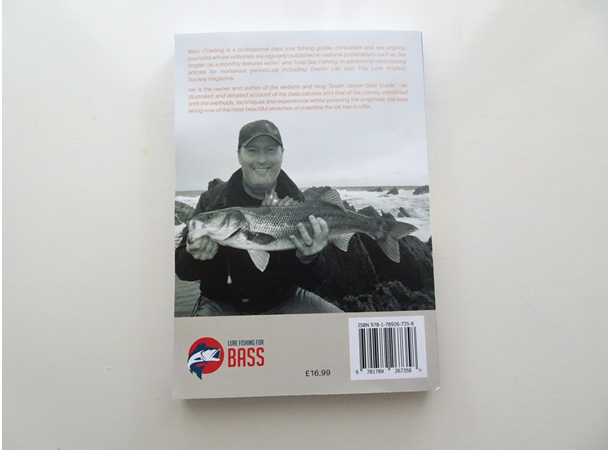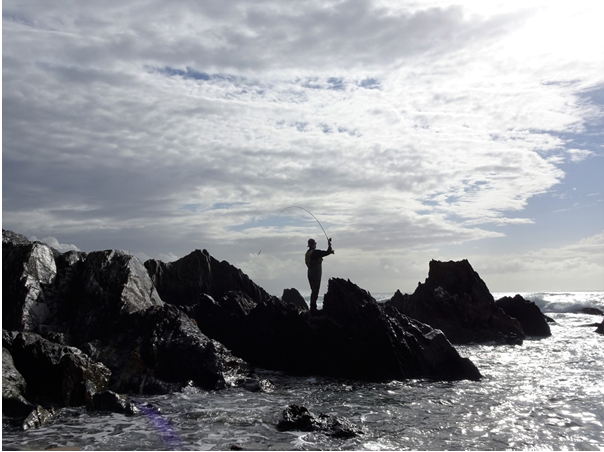‘The Lure of The Bass’ – The contents and why I decided to write it
Posted by Marc Cowling (South Devon Bass Guide) on 1st Oct 2018

I did it! Having researched and collated everything I know about catching bass on lures from the shore in the past 27 years, I somehow managed to type the 71,000 words required (over 8 months) before editing this self-published title ‘The Lure of The Bass’ - A modern approach to catching European Sea Bass on lures.
Why I wrote it
There were a number of reasons why I decided to write the book. Firstly, it was something I have always wanted to achieve, as I thoroughly enjoy conveying my knowledge and personal experiences to others. Secondly, it represents something of a milestone in the sense that I can now present everything I have learnt, taught myself and that I know teach others in the course of my guiding all in one package.
The actual catalyst for sitting down and commencing with what is clearly a seriously demanding undertaking was the multitude of very kind comments, messages and remarks that I received via Facebook and my Blog/Website following a blog post that I wrote back in January. Titled ‘Lure Types’ – When, Where and How to use them, Part One (of what I originally planned to be a Nine Part series) was about Weedless Soft Plastics here, and it was these positive comments that brought about my decision to ‘go for it’ as I realised the content of this and the subsequently planned parts would augment a potential chapter in a book.

Finally, I really believe that there was a need and a requirement to actually put something out there that is a ‘modern approach’ to lure fishing for bass, especially considering the advances in lure design, weedless weightless lures, catching bass in darkness, conservation, etc. Quite simply, there aren’t as many bass in our waters nowadays and we have to work a lot harder and smarter as they say in order to achieve consistent results - it is all about placing more of the odds in your favour and I believe the contents of the book will greatly assist the reader in this respect.
The contents
Essentially, this is a reference book interspersed with anecdotes and stories describing actual events in which my own levels of understanding were enhanced - moments such as the first bass I ever caught on a lure on an ebbing tide, discovering a new type of mark and catching them on lures in darkness for instance.
When I actually sat down and pieced together what I wanted to be incorporated into the book I concentrated on the broad section of what my clients have wanted to learn during their sessions with me - namely:
- How to find marks.
- How to choose the right lure for the terrain and sea conditions.
- How to retrieve the lures correctly.
- The art of watercraft.
The book is aimed at someone who is already familiar with angling in general, be it Course, Fly, Salmon, Carp, Sea (bait), Game or any discipline for that matter. For the angler far less familiar or completely new to the intricacies of bass lure fishing, I have attempted to gradually build, layer by layer, the components required to becoming successful on a consistent level via the information in the chapters. Below is a brief overview of what is contained within them:
Chapter 1 – The Equipment Required
How to minimise your expenditure and maximise your time in relation to purchasing the right lure rod (I break down the components separately, including the length, weight, power, action, etc) and the reel (line capacity, size, retrieve ratio), in addition to the clothing required, mainline/leader and the miscellaneous items (lure clips, etc.).
Chapter 2 – An Introduction to Lures
How to ensure that each lure type you purchase completes a specific job for you in relation the shape, size, colour and movement it possesses and what it potentially represents in regards to the prey bass feed upon. The lure types are broken down into shallow, medium and deep diving floating minnows, weedless soft plastics, surface lures, paddle tails and sinking/suspending lures.
Chapter 3 – Movement and Behaviour
Understanding how bass traverse the coastline and how to identify potential patrolling routes and positioning points is vital to your chances of success. Plus, how do you take advantage of the fearsome, opportunistic and predatory instincts of a bass.
Chapter 4 – Finding Specific Bass Marks
What constitutes as a potential bass mark or likely venue – how do you ‘read’ the ground when the tide has retreated or when you’re looking at an image on Google Earth or a photograph.
Chapter 5 – Determining When
Once you own the appropriate equipment and lures, understand the overall behaviour of bass and you’re confident about the marks you have discovered how do you go about ascertaining if they are even present?
This chapter offers a suggestion as to which naturally occurring elements to record (tidal range, state of tide, water clarity, etc.) and how to collate them so that you can identify patterns in activity from your results. I offer a very detailed insight into my personal diary entries, the conclusions I have come to make, my overall experiences and a quantified catch rate within each parameter. Ultimately, if you are armed with as much information as possible about deciding where and when to fish you will be increasing the odds significantly in your favour.
Chapter 6 – Utilising Lures Effectively
Deciding which lure to use over another when faced with the multitude of sea and weather conditions you’re likely to face is something my clients (more than anything) have wanted to learn. Moreover, you can be in the right place at the right time, but that lure still needs to look and act like something bass are looking for via the angler retrieving or ‘working it’ in the correct manner. This chapter tells you ‘how’ to use lures effectively alongside capitalising on and exploiting the elements to your advantage in pursuit if these wild and wily creatures.
Chapter 7 – Bass on Lures in Darkness
How to identify the marks, which lures to choose and how to use them, in addition to how state of tide, tidal range and light levels can affect your results. Again, I offer a unique insight into my own catches and that of my guided clients within an approach that has been a total game-changer.
Chapter 8 – Conservation and Safety
Why bass are under so much commercial pressure, their life cycle and the ways in which we, as recreational sea anglers, can play our part. Furthermore, how to stay as safe as possible whilst out on the coastline and the risks and dangers associated with the sea, including the use of Personal Locator Beacons (PLBs) and life jackets.

Marc Cowling is a successful shore-based bass lure fishing guide who operates along the wonderful south Devon coastline.
